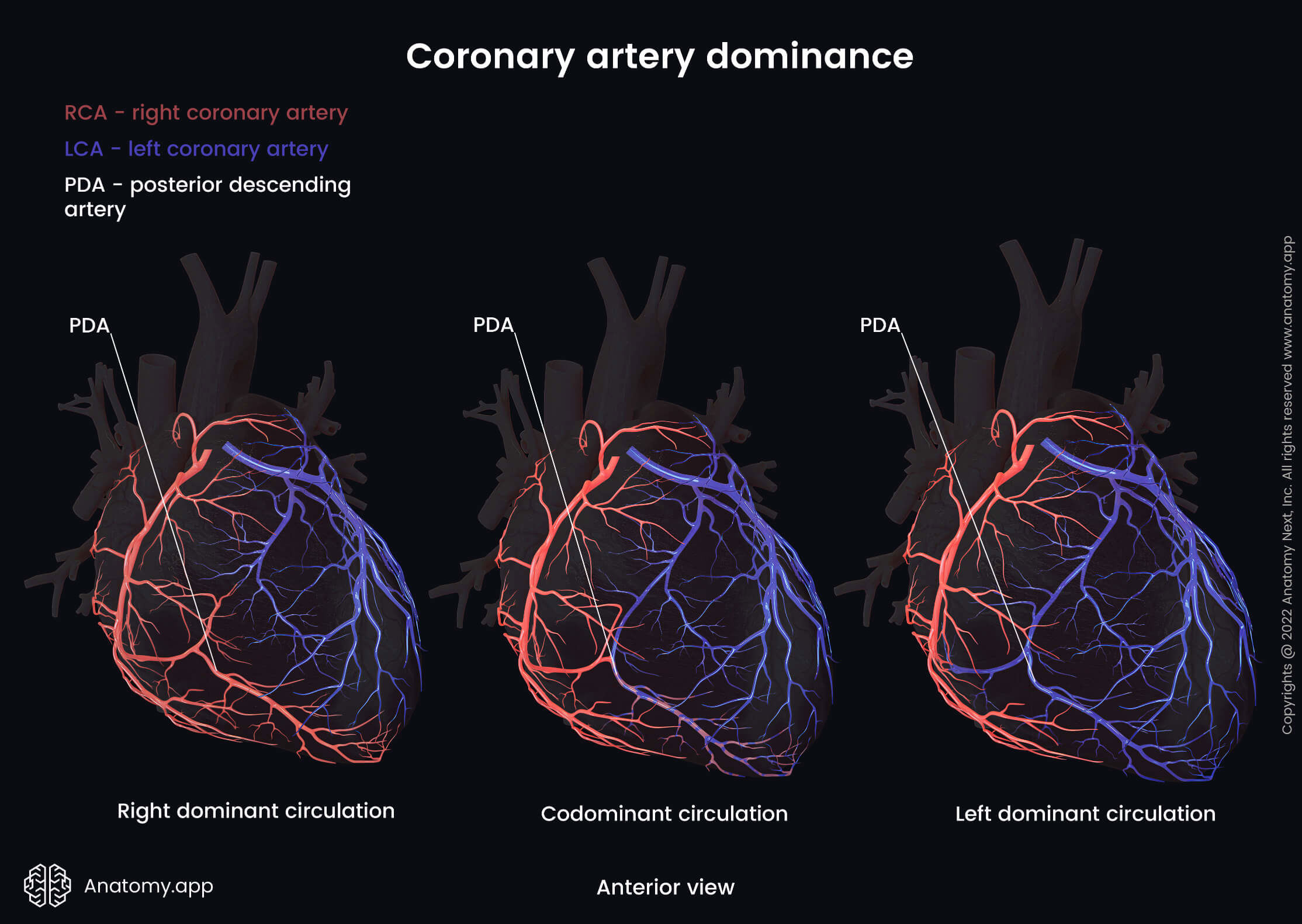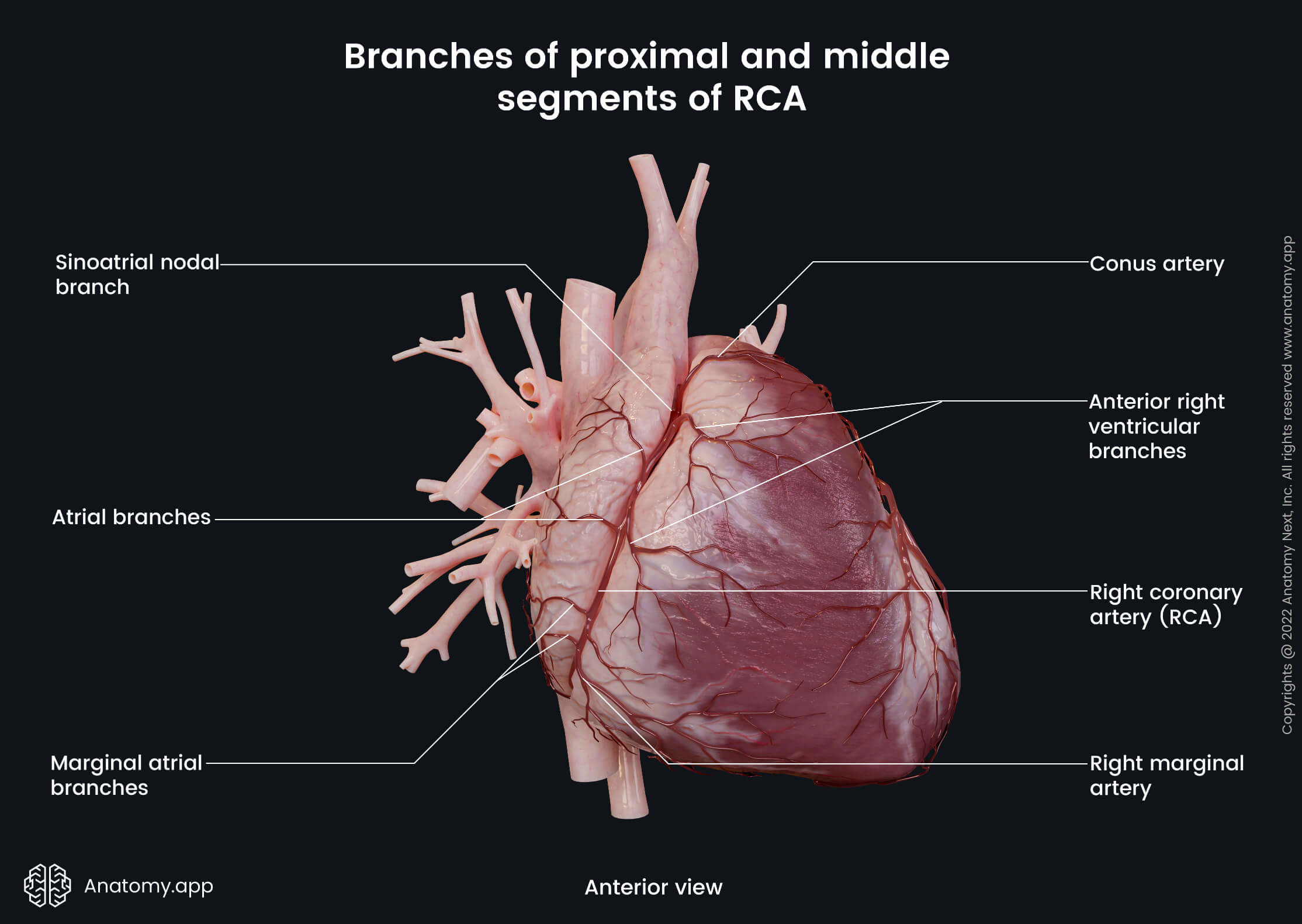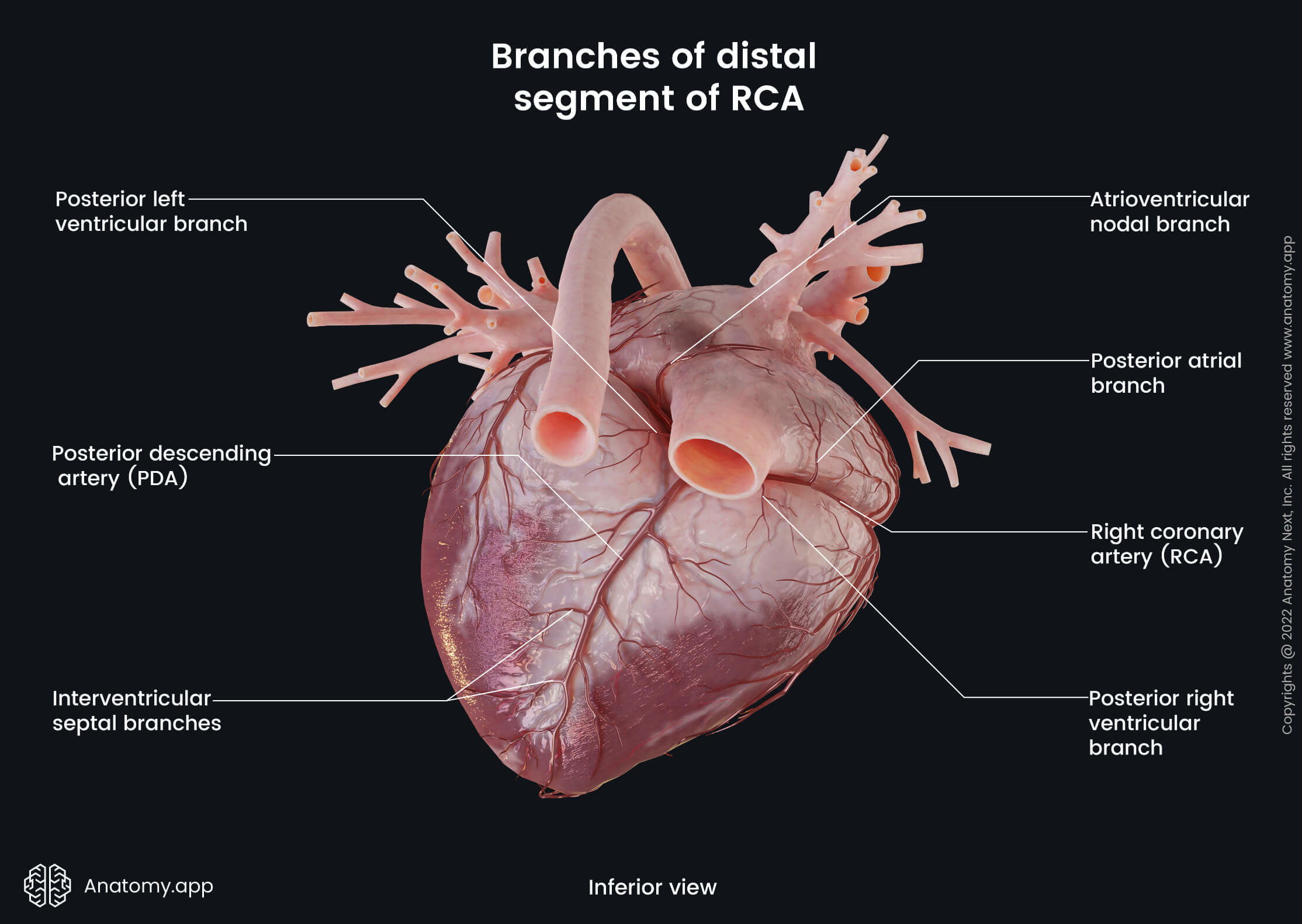- Anatomical terminology
- Skeletal system
- Joints
- Muscles
- Heart
- Blood vessels
- Blood vessels of systemic circulation
- Aorta
- Blood vessels of head and neck
- Blood vessels of upper limb
- Blood vessels of thorax
- Blood vessels of abdomen
- Blood vessels of pelvis and lower limb
- Blood vessels of systemic circulation
- Lymphatic system
- Nervous system
- Respiratory system
- Digestive system
- Urinary system
- Female reproductive system
- Male reproductive system
- Endocrine glands
- Eye
- Ear
Right coronary artery
The right coronary artery (RCA, Latin: arteria coronaria dextra) is a branch of the ascending aorta. Along with the left coronary artery (LCA), it is an essential vessel that supplies the heart with oxygenated blood. The right coronary artery supplies the right ventricle, right atrium, as well as the sinoatrial (SA) and atrioventricular (AV) nodes. The RCA arises from the right semilunar cusp (sinus of Valsalva). Usually, this artery arises as a single branch; however, in some individuals, as many as four branches can be seen emerging from the anterior coronary ostium.
The right coronary artery passes between the right appendage of the right atrium and the pulmonary trunk. It travels in an anterior direction to reach the right half of the atrioventricular groove. Within the groove, the artery descends and crosses the right margin of the heart, enters the diaphragmatic atrioventricular groove, and travels toward the crux of the heart. It passes the crux to anastomose with the left circumflex artery - a branch of the left coronary artery.

Branches of right coronary artery
Branches of the right coronary artery include the following:
- Right conus artery (conus arteriosus)
- Right anterior ventricular branches
- Atrial branches of RCA
- Posterior ventricular arteries
- Right marginal artery
The proximal segment of the RCA gives rise to the right conus artery, atrial branches and right anterior ventricular branches. The first branch of the right coronary artery is the conus arteriosus, also known as the right conus artery. Sometimes, it arises directly from the right coronary sinus, in which case, it is referred to as the third coronary artery.

The atrial branches of the right coronary artery can be grouped into posterior, marginal (lateral), and anterior branches. The right marginal and anterior divisions often occur as paired arteries that supply the right atrium. In contrast, the posterior atrial division is usually solitary and supplies both the right and left atria. The anterior division also gives rise to the sinoatrial node artery to supply the SA node.
There are about two or three right anterior ventricular branches traveling toward the apex of the heart and arborizing gradually. These arteries supply the sternocostal part of the right ventricle. The middle portion of the right coronary artery gives rise to two or three posterior ventricular arteries, which supply the diaphragmatic part of the right ventricle.
Further, on its course, the RCA gives off the right marginal artery. This branch supplies both sternocostal and diaphragmatic surfaces of the right ventricle. The distal part of the RCA passes across the inferior margin of the heart traveling within the diaphragmatic interventricular groove. Upon reaching the cardiac crux, the artery turns to descend within the interventricular groove and is now referred to as the posterior interventricular artery.

The posterior interventricular artery (also known as the posterior descending artery) continues down the diaphragmatic surface of the heart, reaching the apex. Here it joins with the anterior interventricular (descending) artery arising from the LCA. Along its course, the posterior interventricular artery gives rise to septal branches that supply the posterior third of the interventricular septum.